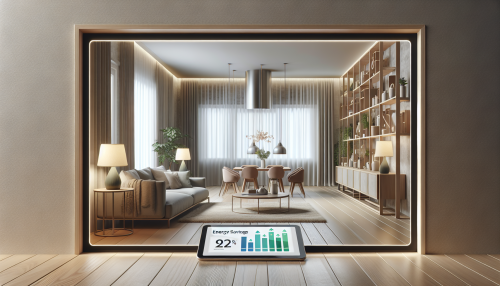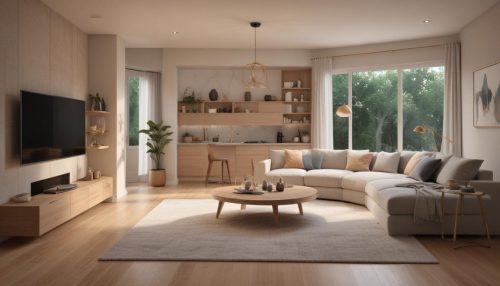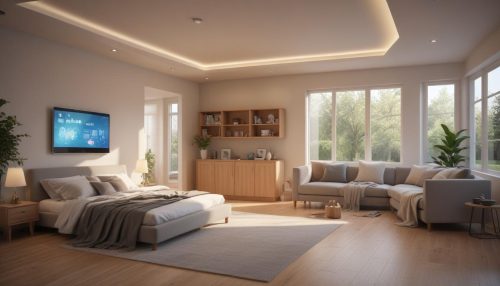Transforming Ordinary Spaces Into Inspiring Environments
August 14, 2025
Every space, whether at home, in the office, or in public places, has the potential to be transformed into a vibrant, inspiring environment. Whether you’re looking to boost productivity, foster creativity, or create a calming sanctuary, thoughtful design and the right elements can make a world of difference. We will explore how to Transforming Ordinary Spaces Into Inspiring Environments that not only look aesthetically pleasing but also enhance mood, motivation, and well-being.

Why Transforming Spaces Matters: Transforming Ordinary Spaces Into Inspiring Environments
The environment you inhabit has a profound impact on your mental state, creativity, and productivity. By changing the way we design and organize spaces, we can create atmospheres that positively affect our emotions and interactions. For instance, a cluttered and uninspiring space can lead to stress and lack of focus, while a thoughtfully curated environment can inspire creativity, boost motivation, and create a sense of well-being.
Key Benefits of Transforming Your Space
- Improved Mood and Well-Being: A beautiful and harmonious space can reduce stress and promote relaxation.
- Enhanced Productivity and Focus: Clean, organized, and aesthetically pleasing environments boost concentration and energy levels.
- Increased Creativity: Thoughtfully designed spaces can stimulate creativity and innovation by providing a motivating atmosphere.
- Better Social Interaction: Comfortable, welcoming spaces encourage positive interactions and collaboration.
For more on how the environment affects our well-being, read Psychology Today’s article on Environmental Psychology.
How to Transform Ordinary Spaces Into Inspiring Environments
1. Embrace Natural Light and Open Space
One of the most powerful tools for transforming a space is the use of natural light. Studies have shown that natural light boosts mood, enhances focus, and promotes better health. When possible, maximize natural light by using sheer curtains or blinds that allow sunlight to flood the room.
- Large Windows: If possible, opt for larger windows or glass doors that let in more light and offer a connection to the outdoors.
- Mirrors and Reflective Surfaces: Use mirrors to reflect light around the room, making the space feel brighter and more expansive.
- Open Floor Plans: Avoid overcrowding the room with excessive furniture. A more open and spacious design allows for better flow and reduces feelings of confinement.
For more on how natural light affects your environment, see The Benefits of Natural Light.
2. Choose a Color Scheme That Inspires
Colors play a significant role in shaping the atmosphere of any space. Certain colors can influence mood, energy, and creativity. For example, soft blues and greens are known to be calming, while bold colors like yellow and red can energize and stimulate creativity.
- Calming Colors: Soft neutrals, pastels, and cool tones are great for bedrooms or spaces where relaxation is important.
- Energizing Colors: Bright colors like yellow, orange, or green can be energizing and are perfect for creative spaces or offices.
- Accent Walls and Artwork: Adding an accent wall or artwork in a contrasting color can create a focal point and inspire creativity.
For more on the psychology of color, read Color Psychology and Its Effect on Creativity.
3. Incorporate Plants and Greenery
Biophilic design, which focuses on the integration of nature into indoor spaces, has gained significant popularity. Studies have shown that having plants in your space improves air quality, reduces stress, and boosts creativity. Indoor plants not only contribute to a sense of tranquility but also add a natural aesthetic to the space.
- Houseplants: Incorporate low-maintenance plants such as succulents, snake plants, or peace lilies to add greenery without too much effort.
- Vertical Gardens: If you’re short on space, consider using vertical planters or wall-mounted gardens to bring the outdoors in.
- Herb Gardens: For a more functional touch, set up a small herb garden in the kitchen, giving you fresh ingredients while enhancing the space.
For more on biophilic design, see The Benefits of Biophilic Design.
4. Create a Flexible and Functional Layout
An inspiring environment isn’t just about aesthetics—it’s also about functionality. Spaces that are clutter-free and easy to navigate contribute to a more productive and harmonious atmosphere. When transforming a room, consider how you use the space and what your goals are for that area.
- Furniture Arrangement: Arrange furniture in a way that promotes ease of movement and encourages collaboration. Avoid blocking pathways or crowding the space with too many pieces.
- Multipurpose Spaces: Design rooms that serve multiple functions. For example, a home office can double as a guest room with foldable furniture or convertible desks.
- Storage Solutions: Invest in smart storage solutions to keep the space organized and reduce clutter, such as built-in shelving or storage bins.
For more on functional and flexible layouts, see The Principles of Effective Space Planning.
5. Add Personal Touches and Meaningful Decor
The most inspiring spaces often reflect the personality and values of the people who use them. By incorporating personal touches, meaningful decor, and items that evoke positive emotions, you create a space that feels authentic and motivating.
- Personalized Artwork: Display artwork, photographs, or objects that are meaningful to you. Personal items can create a connection to the space and evoke memories or inspiration.
- Meaningful Textures: Add different textures, such as cozy throws, soft rugs, or elegant curtains, to create a space that feels comfortable and inviting.
- Incorporate Motivational Quotes: Display inspiring quotes or affirmations that resonate with your values and goals, keeping you motivated and focused.
For more on adding personal touches to your home, check out HGTV’s Tips for Personalizing Your Home.
6. Invest in Sustainable Design
Sustainability isn’t just about being environmentally conscious—it also contributes to creating healthier, more resilient spaces. Sustainable design elements can improve the long-term durability of your space while reducing your environmental impact.
- Eco-Friendly Materials: Use sustainable materials such as reclaimed wood, recycled glass, or low-VOC paints to create a space that is both eco-friendly and stylish.
- Energy-Efficient Appliances: Invest in energy-efficient lighting, appliances, and heating/cooling systems to reduce your energy consumption.
- Sustainable Landscaping: Use drought-resistant plants or install rainwater harvesting systems to make your garden more sustainable.
For more on sustainable design, read Sustainable Home Design Ideas.
Conclusion: Transform Your Space, Transform Your Life
Transforming ordinary spaces into inspiring environments goes beyond just aesthetics. By incorporating thoughtful design, sustainable materials, and personal touches, you can create spaces that foster creativity, productivity, and well-being. Remember, a well-designed space doesn’t just look good—it should reflect your values, enhance your daily experience, and inspire you to achieve your goals.
References:
- Psychology Today. (2021). Environmental Psychology and Its Impact on Well-Being. Retrieved from https://www.psychologytoday.com/us/basics/environmental-psychology
- Inc. (2021). The Science of Color and Its Impact on Creativity. Retrieved from https://www.inc.com/entrepreneurship/the-science-of-color-and-its-impact-on-entrepreneurship-and-creativity.html
- Sustainable Business Toolkit. (2021). Biophilic Design Benefits. Retrieved from https://www.sustainablebusinesstoolkit.com/biophilic-design/





